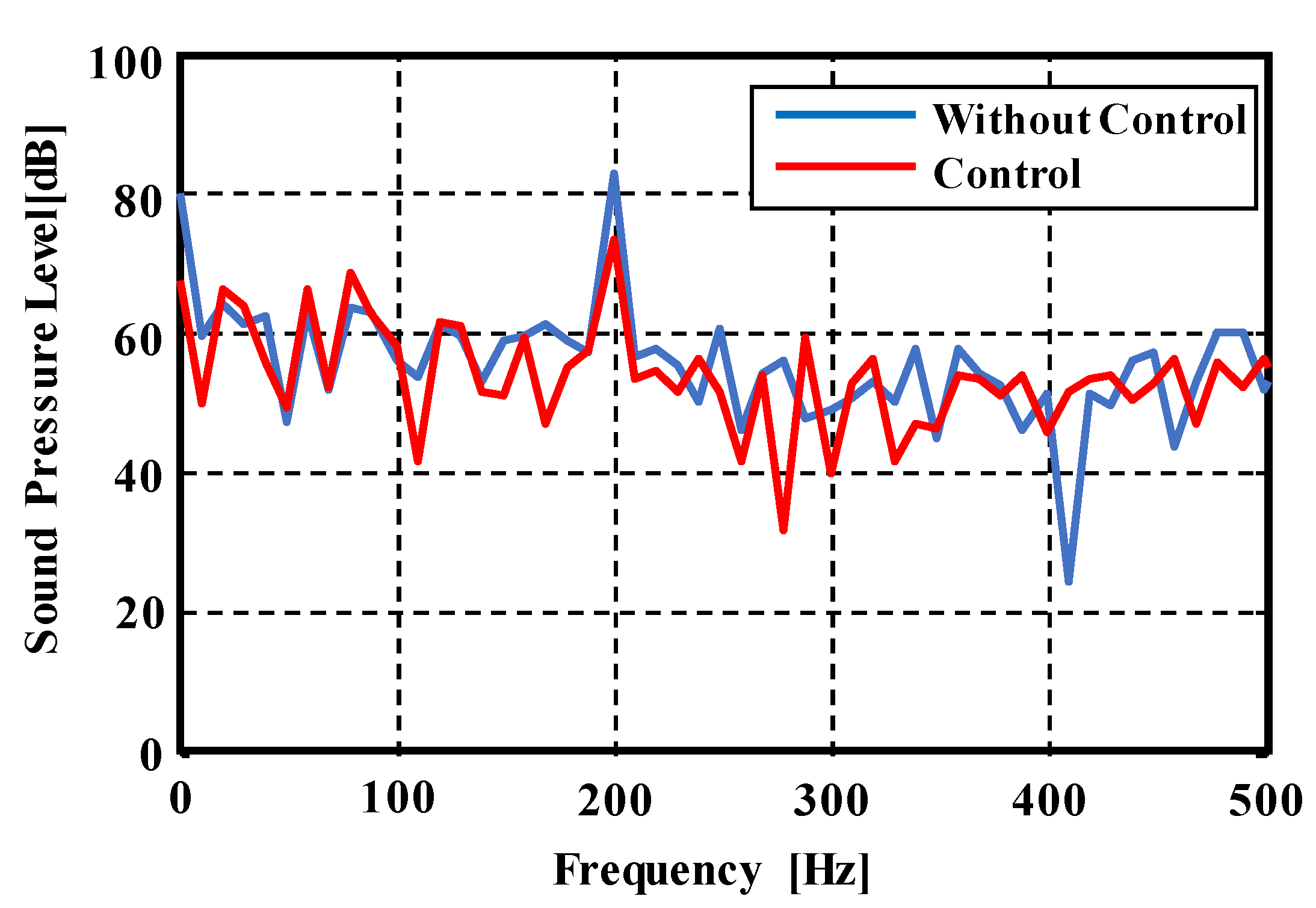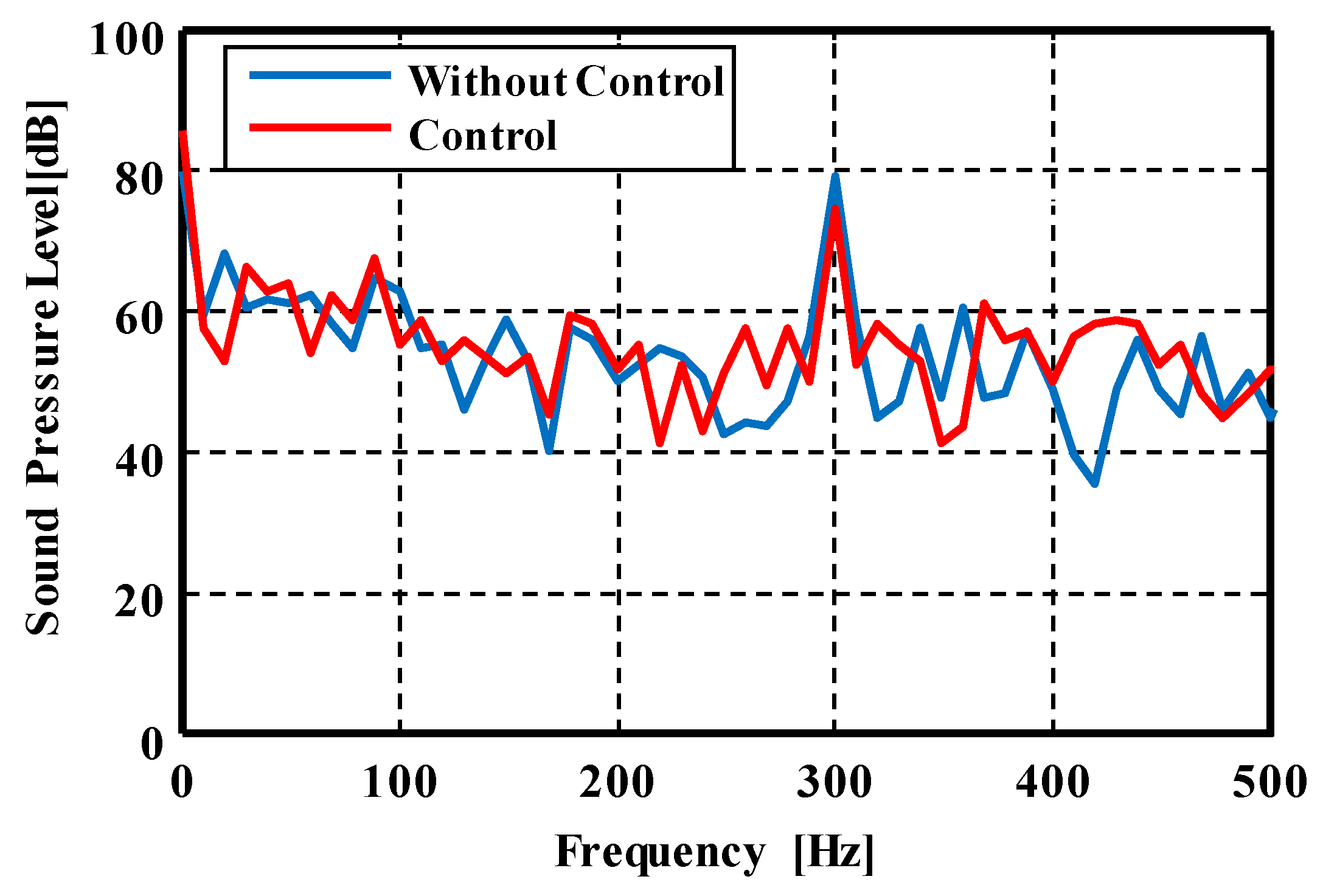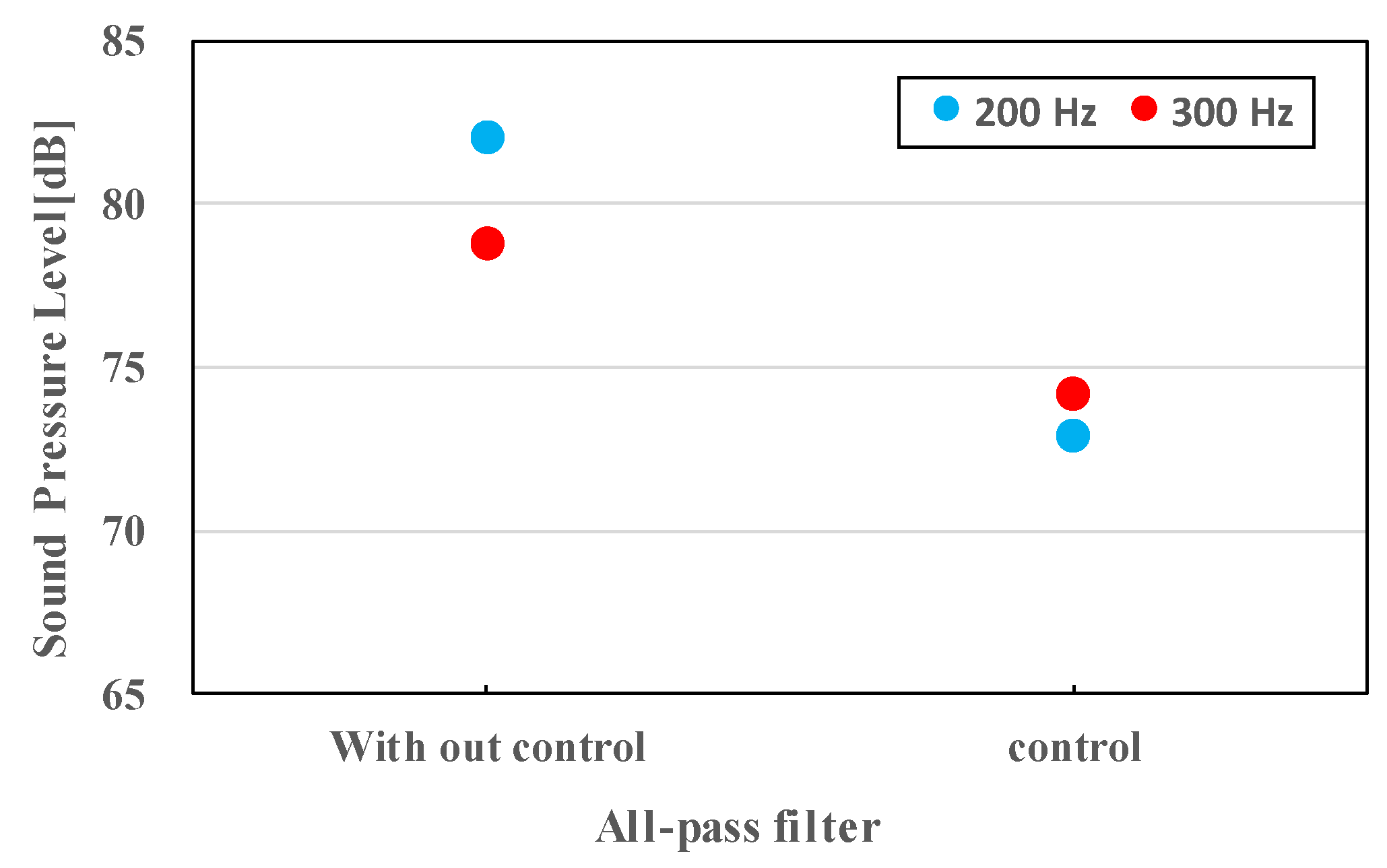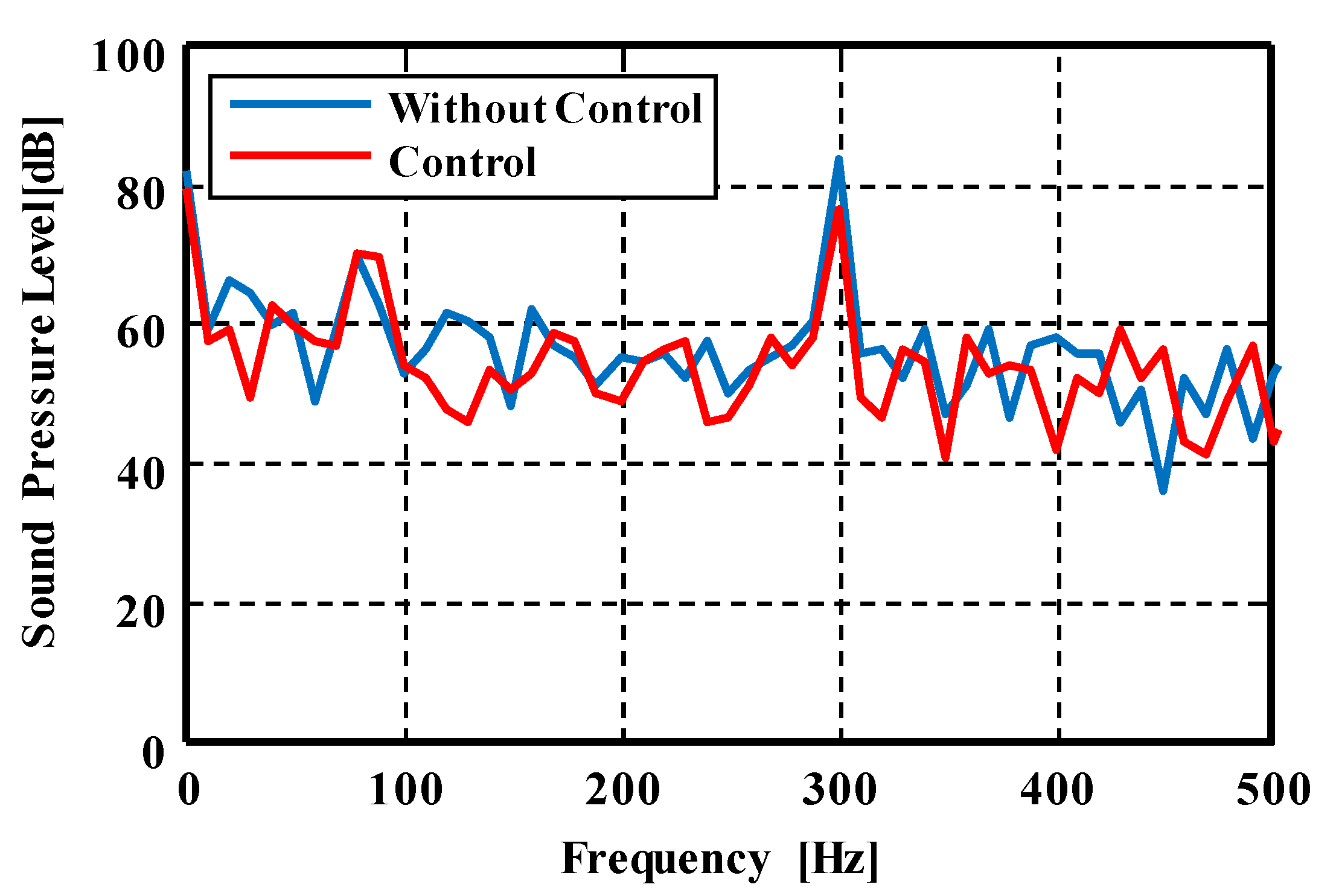A Fundamental Consideration of Active Noise Control System by Small Actuator for Ultra-Compact EV
Abstract
:1. Introduction
2. Noise Reduction Experiment by Using A Giant Magnetostrictive Actuator
2.1. Experimental Equipment and Noise Reduction Method
2.2. Noise Reduction Experiment by Using All-Pass Filter
2.3. Experimental Result
3. Fundamental Consideration of Feedback ANC System
3.1. Noise Reduction Test by Using Adaptive-Pass Filter
3.2. Experimental Result
4. Conclusion
Author Contributions
Funding
Conflicts of Interest
References
- The Ministry of Land, Infrastructure, Transport and Trourism, The Guideline Towards Ultra-Compact Mobility. Available online: http://www.mlit.go.jp/common/000212867.pdf (accessed on 16 August 2018).
- Sunaga, D.; Aono, S.; Matsumoto, H.; Teramura, Y.; Kubota, H. A study on the effectiveness of micro electric vehicle in the metropolitan suburbs. Infrastruct. Plann. Manage. 2016, 72, 641–651. [Google Scholar] [CrossRef]
- Sanada, A.; Tanaka, N. Active control of sound transmission through a honeycomb panel with feedforward and feedback control. Mech. Eng. J. 2016, 3, 16-00466. [Google Scholar] [CrossRef]
- Meysam, S.M.; Chin, Y.T.; Xiang, Y.; Lei, Z.; Shuting, C.; Kui, Y.; Fangsen, C.; Sai, M.P.; Shyh, H.C.; Sze, T.T. Transparent piezoelectric film speakers for windows with active noise mitigation function. Appl. Acoust. 2018, 137, 90–97. [Google Scholar]
- Yokota, K.; Koba, Y.; Ishikawa, S.; Kijimoto, S. Active noise control for a moving evaluation point considering the change of acoustic transfer function. Trans. JSME 2018, 84, 17-00446. [Google Scholar] [CrossRef]
- Kanazawa, L.; Yasui, K.; Yaginuma, K. The reduction effect of construction machinery noise by feedforward type active noise control. Jpn. Archit. Inst. Environ. Pap. 2017, 82, 97–103. [Google Scholar] [CrossRef]
- Markus, E.C.; Juergen, H.Z. Active Noise Control by Adaptive Noise Filtering. U.S. Patent 15,380,319, 22 June 2017. [Google Scholar]
- Nitin, K.; Jon, D.H.; John, L.M. Systems and Methods for Adaptive Active Noise Cancellation for Multiple-Driver Personal Audio Device. U.S. Patent 10,013,966, 3 July 2018. [Google Scholar]
- Bisnette, J.B.; Smith, A.K.; Vipperman, J.S.; Budny, D.D. Active Noise Control Using Phase Compensated, Damped Resonant Filter. J. Vib. Acoust. 2005, 128, 148–155. [Google Scholar] [CrossRef]
- Nishimura, M.; Usagawa, T.; Ise, S. Active Noise Control, 1st ed.; Corona Publishing Co., Ltd.: Tokyo, Japan, 2006; pp. 9–10. [Google Scholar]











| Giant Magnetostrictive Actuator | Value |
|---|---|
| Size (mm) | 90 |
| Weight (g) | 390 |
| Magnetostriction λ (ppm) | ~2000 |
| Generated stress σ (N) | ~30,000 |
| Response speed μ (s) | ~40 |
| Electrical-mechanical coupling coefficient K | 0.7~0.75 |
| Energy density (kJ/m3) | 14~25 |
| Curie temperature (°C) | 350 |
| Electrical resistance R (Ωm) | 60 × 10−8 |
| Density ρ (kg/m3) | 9.25 × 103 |
| Young’s modulus YH (GPa) | 26.5 |
| Compressive strength Tc (MPa) | 700 |
© 2018 by the authors. Licensee MDPI, Basel, Switzerland. This article is an open access article distributed under the terms and conditions of the Creative Commons Attribution (CC BY) license (http://creativecommons.org/licenses/by/4.0/).
Share and Cite
Kato, T.; Suzuki, R.; Miyao, R.; Kato, H.; Narita, T. A Fundamental Consideration of Active Noise Control System by Small Actuator for Ultra-Compact EV. Actuators 2018, 7, 49. https://doi.org/10.3390/act7030049
Kato T, Suzuki R, Miyao R, Kato H, Narita T. A Fundamental Consideration of Active Noise Control System by Small Actuator for Ultra-Compact EV. Actuators. 2018; 7(3):49. https://doi.org/10.3390/act7030049
Chicago/Turabian StyleKato, Taro, Ryosuke Suzuki, Rina Miyao, Hideaki Kato, and Takayoshi Narita. 2018. "A Fundamental Consideration of Active Noise Control System by Small Actuator for Ultra-Compact EV" Actuators 7, no. 3: 49. https://doi.org/10.3390/act7030049





